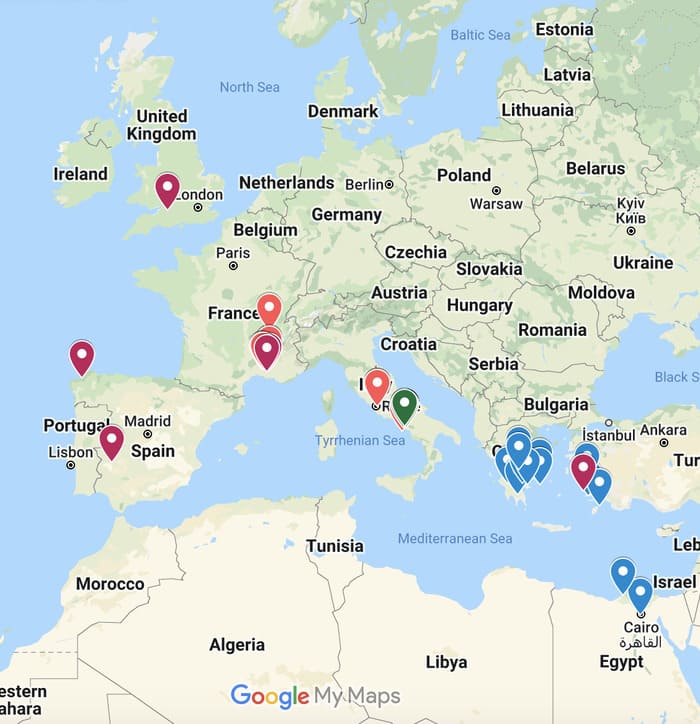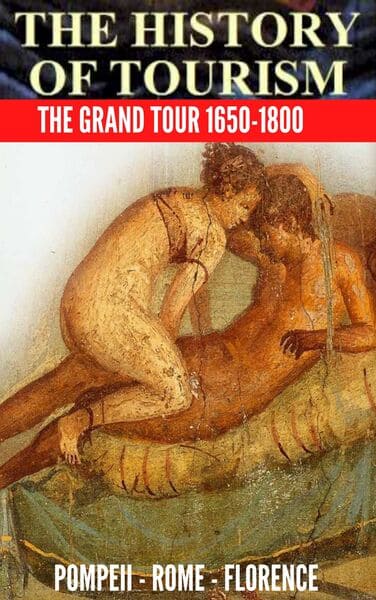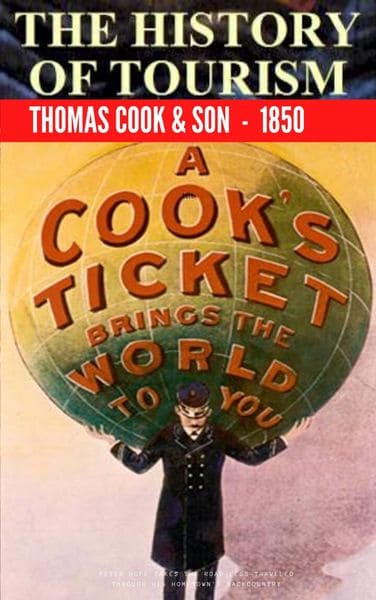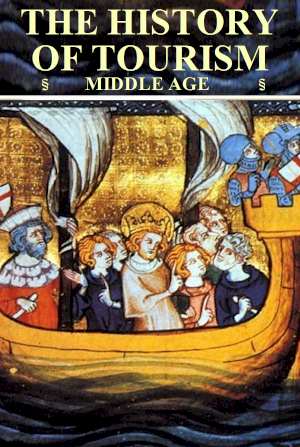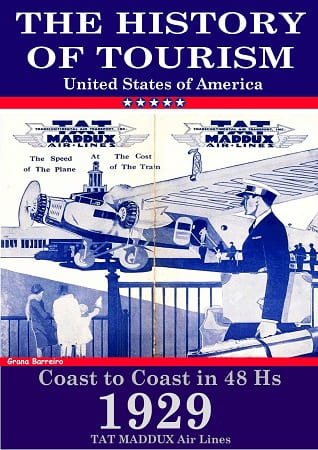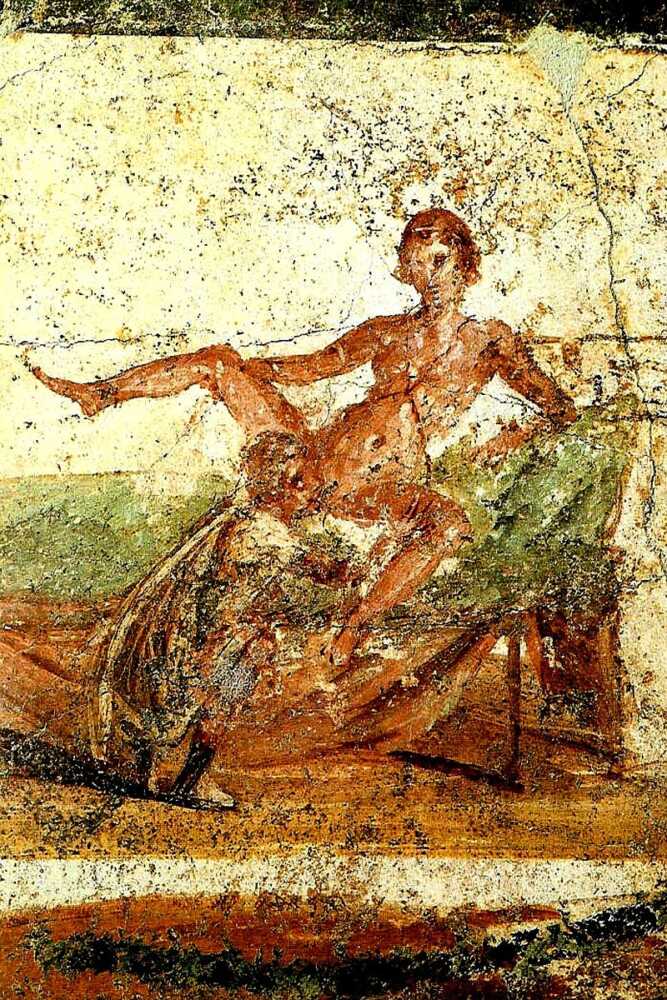Tourism in Ancient Rome: Historic Evolution of Tourism
Rome – Roman Roads – Pont du Gard – Roman Sex Festivities. – Roman Roads Calculator
This is the first part of an investigation of the History of Tourism. The second part, Tourism in the Middle Ages can be read here Tourism is a series of trips made for pleasure or for commercial, professional or similar reasons, during which the absence of habitual residence is only temporary. History of Classical Tourism in ancient times. See Tourism in Ancient Greece
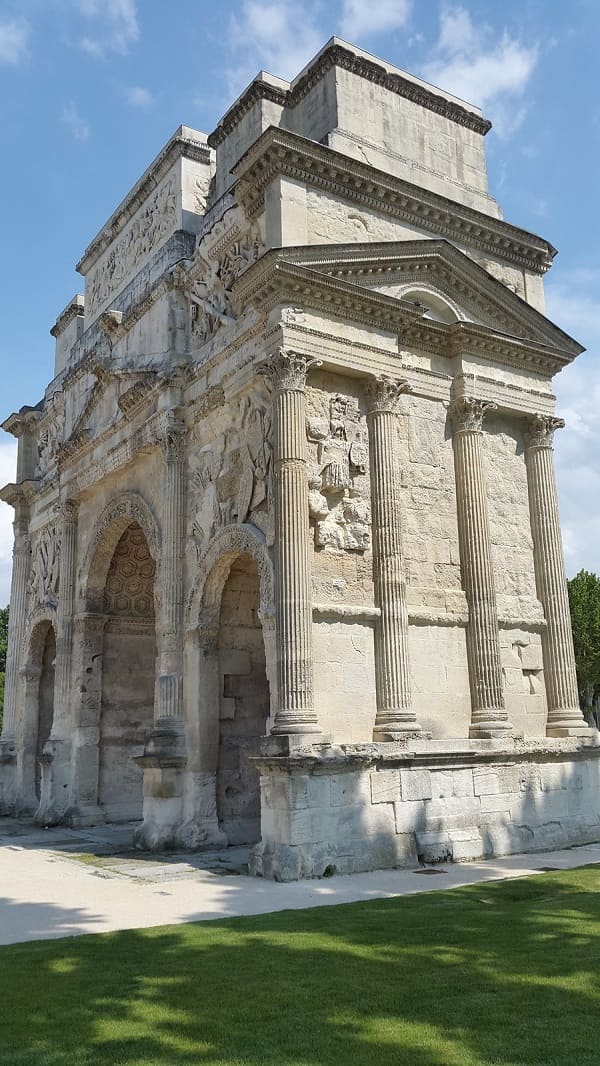
Modern tourism was born in the XIX century, as a consequence of the Industrial Revolution, with displacements between distant places, with the main intention of developing leisure, rest, culture, health, business or family relations.
These movements are differentiated by their purpose of other types of travel originated by wars, migratory movements or conquest. But tourism has many historical antecedents.How was the tourism in ancient time? How was the tourism in ancient time? Tourism and travel in ancient times, short or long distances was an important and dangerous business. It required careful planninMost of the trips were made for religious reasons, war, diplomacy, health reasons or training in schools of scholars. They also go to festivals such as the Olympic Games or the Dionysian Games.
Samsung Store: Galaxy Z Fold4 Series


Examples of Tourism in ancient Rome, according to social class
An upper-class Roman citizen might travel to Rome to enjoy the city’s attractions, such as the Colosseum, the Roman Forum, and the Pantheon. He could also visit the thermal baths, theaters and temples.
Middle-class Roman citizens could travel to a coastal city to enjoy the beaches and climate. You could also visit the ruins of ancient Greek and Roman civilizations.
A lower-class Roman citizen might travel to a rural area to enjoy nature and outdoor activities. You could also visit hot springs or spas.
A foreigner could travel to Rome to visit the center of the Roman Empire. You could also visit other major cities, such as Constantinople, Alexandria, and Carthage.
Traveling in ancient times: Slaves & Tourism
In Ancient Rome free men gave great importance to leisure, and devoted it to culture, entertainment, religion and sport. We must remember that all these activities could only be done by free men of the upper class or the Nobles. Many slaves were also available at that time. Approximately seven slaves for each free man. It is for this reason that tourism was an exclusive activity of wealthy class that moved with servants, slaves and a considerable guard for protection. The tourist activity that was not religious.

What was it like to travel in the Roman Empire?
During Roman Empire, the Romans frequented thermal waters and great spectacles, like the theaters, and the coliseums. They made trips to the Mediterranean coast in the city of Pompeii and Herculaneum, Campania area (near Naples).Also the island of Capri, where there were summer residences. The Emperor Tiberius had a villa on the island of Capri (today you can visit its ruins). These pleasure trips were possible due to Pax Romana, the development of communication routes. They also influenced economic prosperity due to the trade that allowed the creation of an upper class. And of course free time.
Travel in Ancient Rome: A Bit of Roman History

During the empire (27 BC to 476 AD) begins a period of absolutism in Rome, where the emperor was chosen by the army. With Octavio Augusto (first emperor) the Pax Romana was achieved, which lasted approximately 200 years. In this epoch is where the Roman tourism had its maxima. The empire was divided into provinces that in turn were divided into Municipium and Coloniae. It is depending on their legal hierarchy Each territorial division had services for public enjoyment and entertainment, which were sometimes visited by inhabitants of other territories.

The Roads in the Ancient Roman Empire
Rome – Pont du Gard – Roman Sex Festivities. – Roman Roads Calculator
How were the Roads Built in Ancient Rome?
The Romans built three types of strategic roads (viae): the so-called
- Stratis Lapidibus (Paved)
- Injecta Glarea (Affirmed)
- Terrenea (Flattened)
Siculus Flacus, Roman Gromaticus (land surveyor), in the 1st century, classifies the roads into:
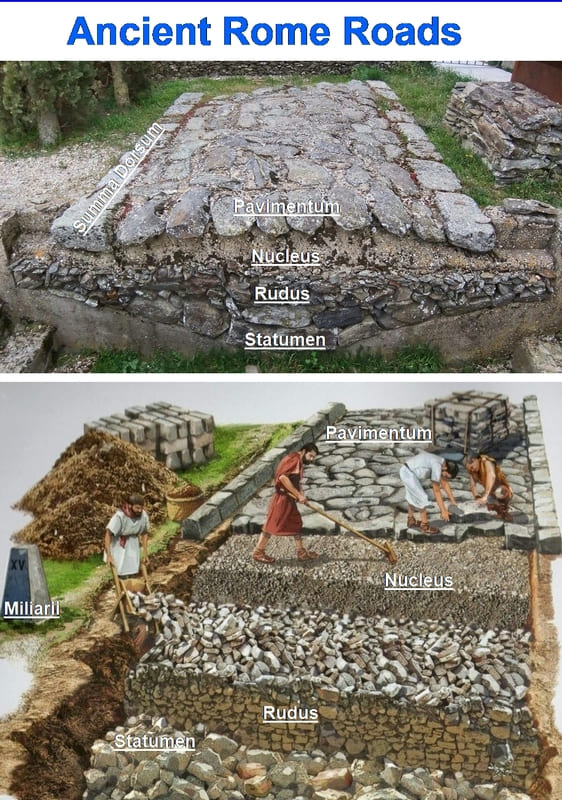
Viae publicae – Public Roads
What were the Viae publicae (Public Roads) in Ancient Rome?
The main roads of the Empire are called viae Praetoriae, viae Militari or viae Consulares. It was the State that was in charge of its construction, but the cities and the owners of the areas crossed by these roads had to guarantee its maintenance. The average found for the width of the public roads was 6 to 12m.
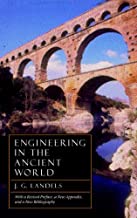
Viae Vicinales – Neighborhood Roads
What were the Viae Vicinales (Neighborhood Roads) in Ancient Rome?
They started from public roads and allowed several Vicus in the same region to be joined together. They were the majority of the routes of the network. The average width of a viae vicinalis was about 13 feet.
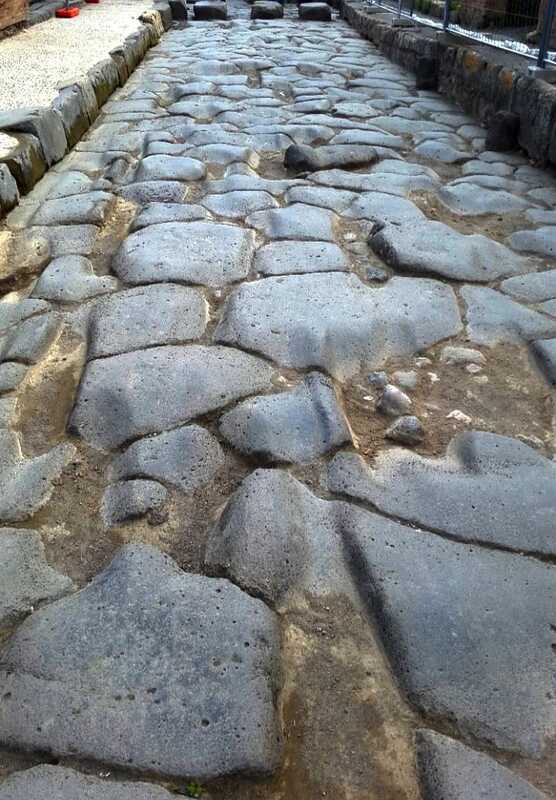
Viae privataes, Rusticae, Agrariae – Private Roads
What were the Viae privataes (Private Roads) in Ancient Rome?
They united the main properties, the villae, with the viae vicinales et publicae. They were private, reserved for the exclusive use of the owner who financed it in its entirety. The average width of a Viae Privata (Private Roads) was 8 to 13 feet The roads were initially used to facilitate the advance or displacement of the Roman legions. Of course they were also used for administrative, commercial and tourist purposes. The main roads were financed by the State, and the secondary roads were paid for by the affected municipalities. Along the roads, every 20 or 25 Roman miles, mansions, resting places and also for changing horses were built.

There are documents that provide data on the existing road network in times of the Roman Empire, the best known is the “Itinerarium Provinciarum Antonini Augusti”, known as the Itinerary of Antonino, from the year 280, of unknown author. It collects the 372 most important roads from Rome to the furthest points of the Empire, recording the existing mansions and the distances between them, totaling about 60,000 Roman miles
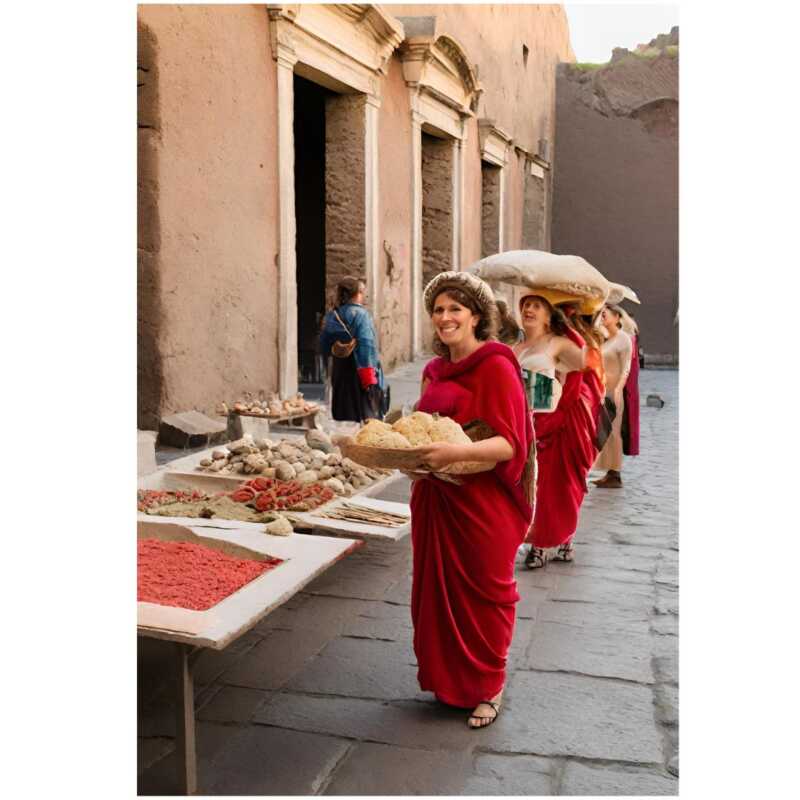
How Were The Roman Roads Built?
The main construction group was made up of the works Manager (Curator Operis), the Contractor, (Maceps), the Engineer, (Architectus), the Specialized workers (Cementarius) and the Bricklayers, (Structures). To level the land they used excavation tools. They cut two parallel furrows with an Aratrum (Plow) 40 feet apart; These furrows were the Fossae (ditches) and they allowed to know the conditions of the subsoil. If it was not adequate, it was replaced or repaired, or wooden piles were driven into it. Once the bottom was consolidated, a layer of sand 0.5 feet thick called Pavimentum was added in which the stones of the Statumen were embedded with a thickness that varied depending on the state of the soil from one to two feet.
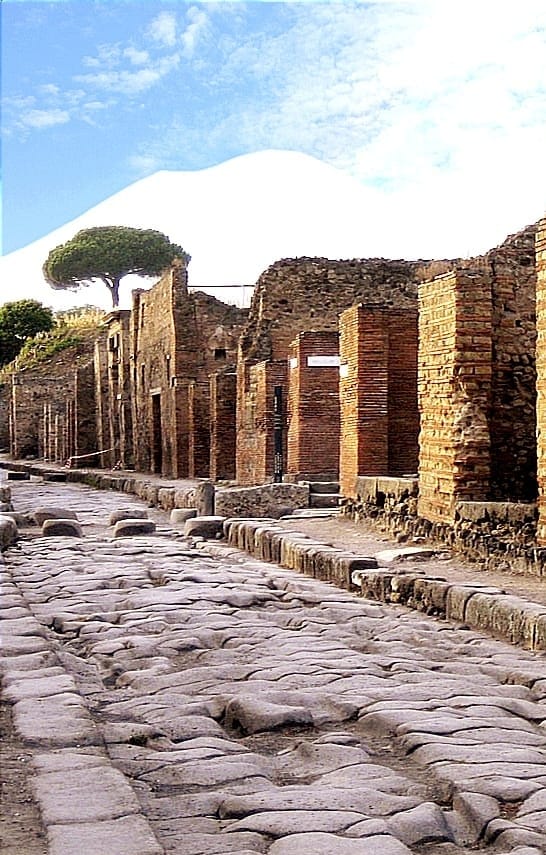
The Stones – Built Roads in Ancient Rome
The agglomeration of the stones was done with lime or clay. After the statumen, a second layer called Rudus was placed. This layer used to be almost a foot thick and was composed of pebbles or small stones, plastered with lime mortar and compacted with the pavicula or rammer.
The third layer was the so-called Nucleus, which consisted of gravel concrete and slaked lime. It was consolidated with a roller, (Cylindrus), and its thickness varied from the ends of 1 foot to 1.5 feet. The next layer was the Summa Crusta or Summun Dorsum. This layer was placed on top of the previous one before it set. The cape could be made with blocks of polygonal stones with regular or irregular shape, (Opus Incertum). In other cases the layer was made of concrete with shale blocks placed on edge or simply gravel. The total thickness of the roadway was 3 to 5 feet and its width between ditches was 4 feet.
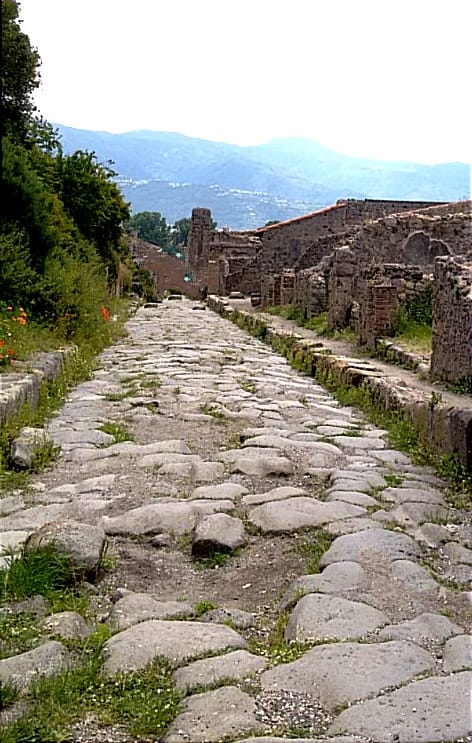
It also had lateral edges 1.5 feet high and 2 feet wide supported by the statumen, on which the Centurion (infantry officer) walked. From time to time, stones called Gradus were placed on the road, which was a pedestal that was used to climb on horseback. There were also stones called miliarii, milestones, which marked the distance every thousand Roman steps,

Bridges & Tunnels
When necessary, bridges were built and tunnels dug for the continuation of the road. In that case, more sophisticated tools were used such as Roman wheel cranes that lifted up to two tons. This type of crane was used in the Middle Ages and even some cranes survived until the 19th century. Here you can find information about the Roman wheel cranes in Germany, France and England, which can be seen today
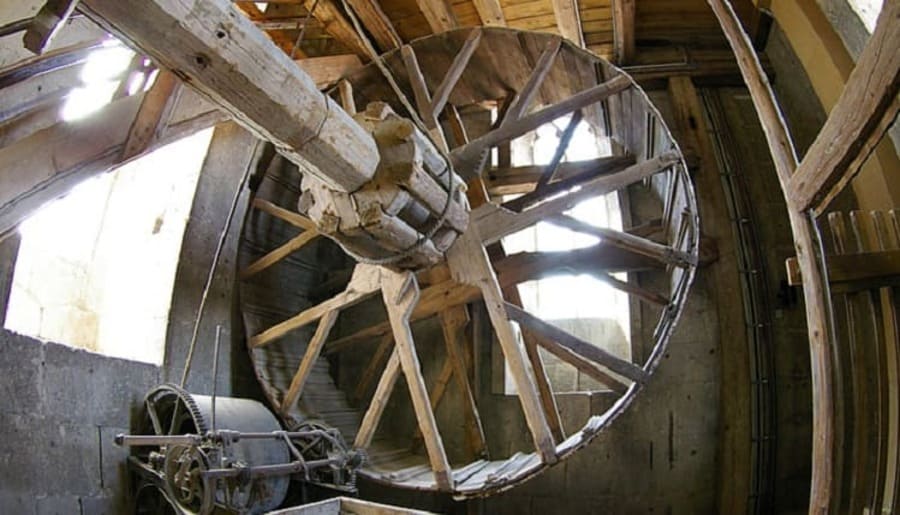
That it was a Roman Mile?
In ancient Rome the Roman mile was equivalent to the distance traveled in a thousand steps (in Latin: mille passus, plural: milia passuum). For the Romans, one step was equivalent to two steps of the current ones, since they considered the stride as a complete cycle: the distance traveled by one of the feet after resting on the opposite foot. In turn, a passus was equivalent to five Roman feet. The Roman mile (milia passum in Latin) is 5,000 Roman feet and equals 1,481 meters in the decimal metric system and 0.92 United States miles
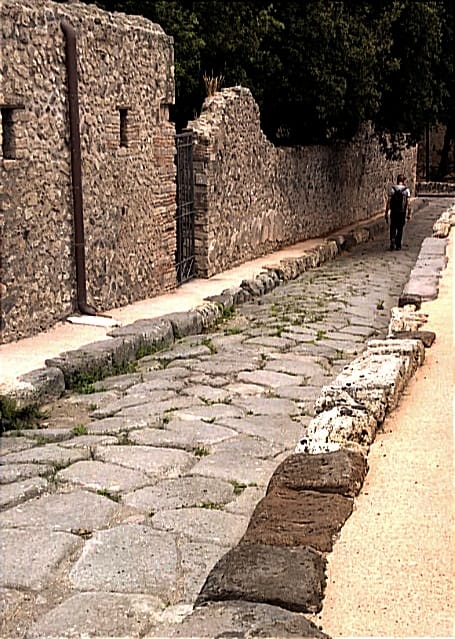
Calculating Distances
There is an online application called Statio Orbis, which calculates the distance between different places of the Roman Empire. It includes land and sea routes, both in winter and in summer. You can read Orbis’s note here Statio Orbis – Stanford University

The Roman Ways Today
Very few and very few sections have survived. They are found sporadically in museums or outdoors in countries such as Italy, Spain, England, France and some countries in Africa. Remember that when traveling you must comply with the TSA Rules when using airports within the United States
What Places did Tourism go to in Ancient Rome?
These attractions were temples, circus maxima, pantheons, basilicas, markets, amphitheatres and theaters. All the provinces and colonies communicated through a network of roads, roads and roads, which began to be built around 150 BC, covering some 100,000 miles. This allowed to reach the entire empire from Scotland and Germany to Egypt, Persia and Crimea
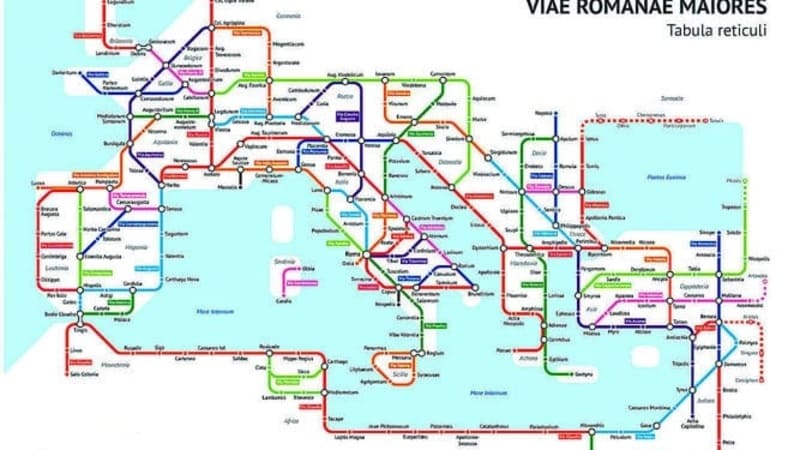
The Roads in Ancient Rome Were for Military Use?
In the beginning the Roman roads were designed for military use. Legions and military equipment could be moved much faster than if they were transferred to cross country. The time of transfer between cities was shortened not only for military use but for trade and tourism. Patrician families used to send their children to Greece to receive rhetoric and philosophy classes. In this case, the route by sea was the most chosen, for the comforts and speed compared to the terrestrial displacement. Accommodation facilities on routes far from the Roman metropolis were very scarce. Julius Caesar, who was traveling at an extraordinary speed, traveled from the Rhone ( germany) to Rome in about eight days. However, the fastest journey of antiquity was, the one that made Tiberius to Drusus from Tichinum in Germany, a distance of 200 miles, made in 20 hours even though he had only one guide and had to make several changes of mount.
ORBIS – University of Stanford Raod & Network Calculator on Line
Travel insurance.
On the one hand, there is evidence of commercial insurance for the transport of goods in ancient Rome, although that of passengers is not so clear. In order to benefit from them, the navigation period had to be taken into account. Firstly, the period called “open sea”, in this case from May 27 to September 14. Expandable in front to March 10 and behind to November 11, with certain restrictions. Finally, from November 11 to March 10 of the following year, there was the so-called “closed sea”, where no one was responsible for those who ventured into the sea. The entire Roman Empire was filled with seaports, some as outstanding as Carthage Nova, Alexandria or Brindisi. But the most important for the Romans is located 30 kilometers from the capital, specifically in the Roman city of Ostia. From this place it is estimated that Gades, currently Cádiz, could be reached in a week, Cartago Nova in a maximum of four days, and Alejandría, as a tourist destination, in less than two weeks.
How Were the Roads in Ancient Rome?
There were stone signs indicating the distance to the next city, the name of the road, its construction date and its constructor Every 10 miles approx. There were some posts where travelers could change their exhausted horses and even eat. It was through these trade routes that tourism was developed as a secondary activity. Maritime routes were also used, being the main ports those of Alexandria / Egypt), Ostia (Italy), Siracuse ( Italy) and Cartago Nova ( Spain).

How Much it Cost Per Mile to Travel in the Roman Empire?
Travel in Ancient Rome: Besides being dangerous, traveling in ancient Rome was also very expensive, especially by Land. Only those who had good reasons to travel traveled, be they economic or, more often, military. A long overland carriage ride could cost on the order of a denarius per mile. According to the Bible, a denarius was the daily salary of a worker, so one can get used to the idea of the enormous economic effort involved in moving around the Empire.
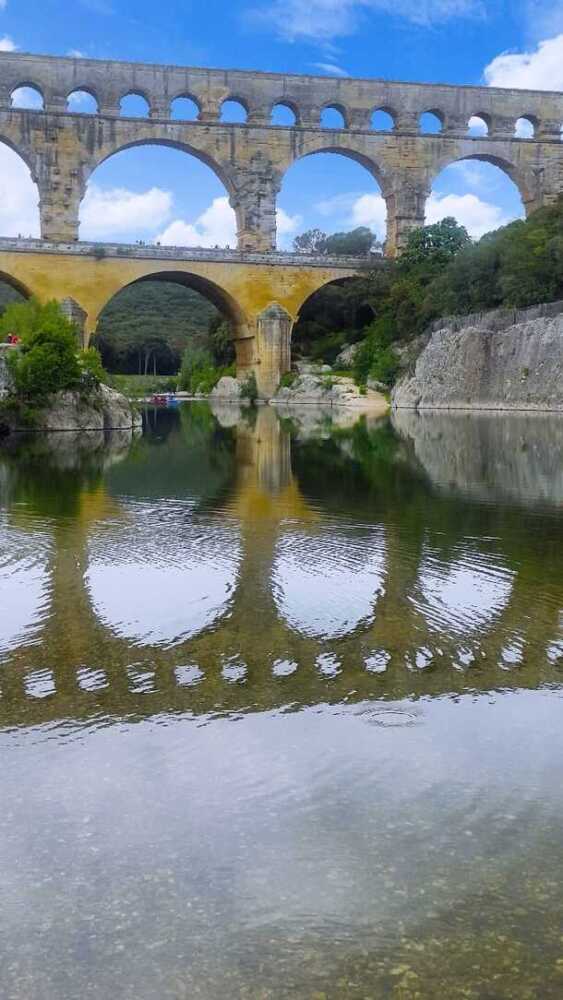
Why Were There Stones on the Side of the Roads in the Roman Empire?
Plutarch, attributed to Gaius Graco, the placement of stones on the sides of the road, at close distance from each other, so that those who traveled on horseback could ride from them without the assistance of slaves. Keep in mind that the Romans did not use stirrups when riding. The roads had a post service every five or six Roman miles and it was possible to travel through the Roman Empire at a rate of about one hundred miles a day or more. The journey from Antioch to Constantinople, a distance of 752 miles could be made in about six or seven days.
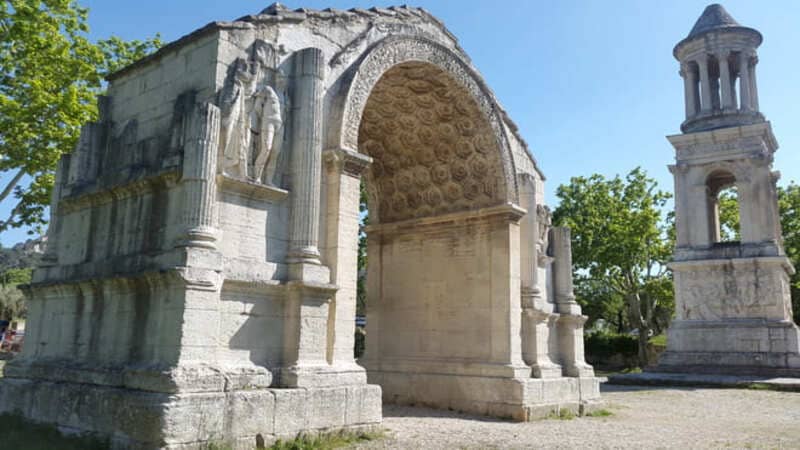
The mausoleum of Glanum is a Roman funerary monument located in the ancient city of Glanum, near the city of Saint-Rémy de Provence (France). Built between the years 30 and 20 BC (August Emperor) It is a tribute to a family of Gallic origin that obtained Roman citizenship fighting in the Roman army. There is an inscription in the mummies
SEX.M.L.IVLEI.C.F.PARENTIVUS.SVEIS –SEX (your) M (arcus) L (ucius) IVLIEI C (aii) • F (ilii) PARENTIBVS SVEIS– SEXTUS, LUCIUS (and) MARCUS IULII (Julia) SONS of CAIUS (dedicate this) to their parents

Travel in Ancient Rome: Julius Caesar – Academic Trip and Kidnapping
Julius Caesar, in 75 B.C. He had had to flee from Rome since he was at odds with the Roman dictator Sila. Banished to the Aegean Islands to avoid the assassins of Sila, he devoted himself to study and prepare for when he returned to Rome. It was just on a trip to study at the Oratory and Eloquence Academy of Molon of Rodas was tackled by sackcloth pirates – (Cilicia, on the south coast of present-day Turkey)
History of Tourism map
The pirates valued the rescue to be requested by the crew in a total of 20 talents. Julius Caesar to the astonishment of the pirates, he told them to ask for nothing more and nothing less than 50 talents for his life. Obviously the pirates had nothing to object to. A talent corresponded to the weight of a cubic foot of water, which in ancient Rome amounted to 75 Pounds / 1200 oz. If we say that gold, today, is U$S 1400 per Oz, Total are U$S 1,680,000 per tatent
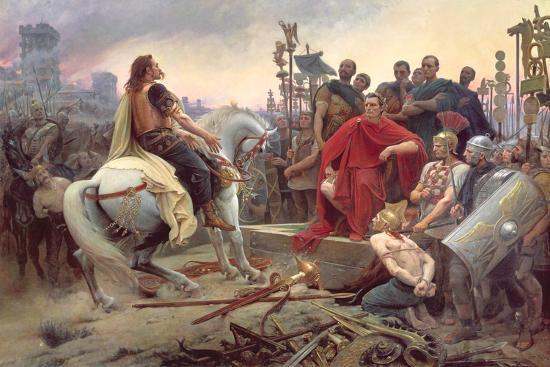
Gaius Julius Caesar was transferred to the island of Farmacusa (off the coast of Halicarnassus), where he stayed, together with a friend and two servants held by the pirates. The rest of the crew was sent to seek rescue. It was 38 days before the envoys came with the money, in which the chroniclers (Plutarch, especially) tells that Julius Caesar, rather than being imprisoned, lived like a king He dedicated himself to sports, writing poetry, studying and writing speeches – which forced his kidnappers to listen – and even silenced the pirates when they wouldn’t let him sleep. During his captivity, Julius Caesar threated that when he was released, he would capture them, recover the money and crucify them. Obviously, the pirates didn’t take it too seriously. Once the rescue was obtained Julio César was released
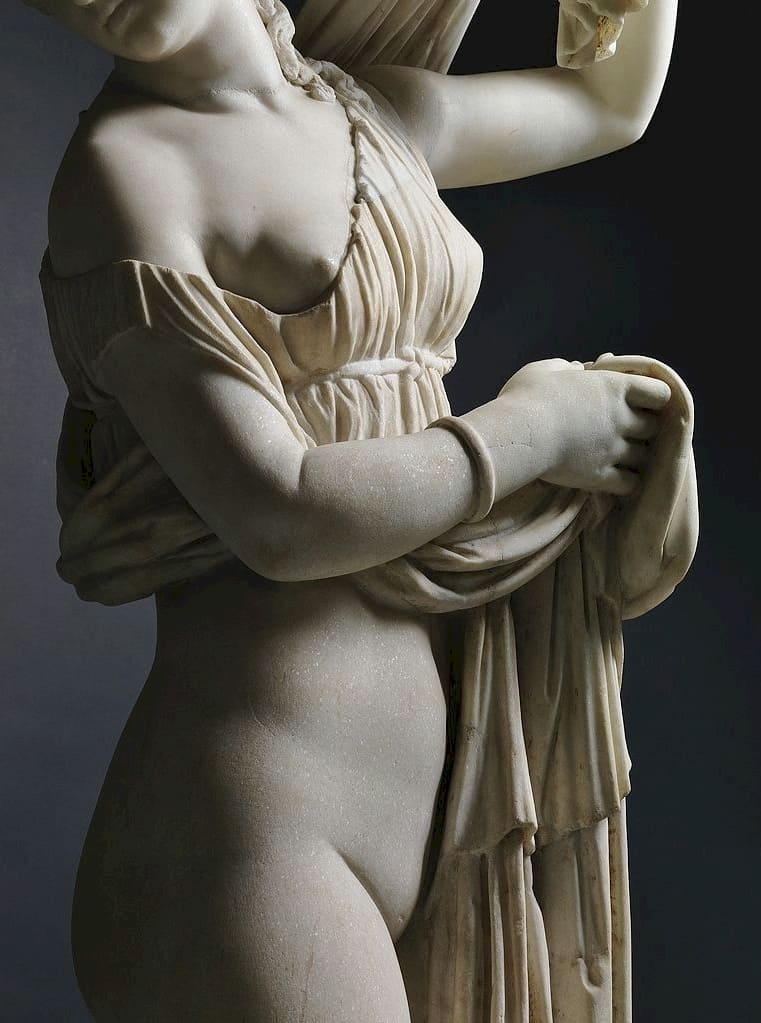
Once released he went to Pergamum, where he got 500 soldiers and 4 ships, returning to Farmacusa and catching the pirates in full celebration for their loot, capturing them without too much trouble. The 350 pirates were taken to Pergamum again. There, Julius Caesar sent everyone to 30, who were crucified as he had promised. of course, as a humanitarian detail made them slaughter before crucifying them. In this way, Julius Caesar apart from creating a reputation that did not leave him until Bruto murdered him many years later, he managed to keep the 50 rescue talents. Luggage Samsonite Store Ship to Philippines
do i need a real id to fly in 2022?
Only the rich made tourism in the Roman Empire?
The Roman citizens were very fond of tourism, in most cases for pleasure. We must consider that it is the same case as the Greeks. Only free noble and upper class men could afford a tourist transfer. This transfer included servants, slaves, clients and armed escort. This was both by land and by sea. The only documented case of the displacement of a high class and noble character was that of Cato the Elder, Senator and Roman governor of Hispania (Present Spain). Cato was mobilized on foot or on horseback with only one servant. The day he left to be governor he sold the horse so as not to cause more expenses to the treasury. Needless to say, his example was not imitated by anyone.
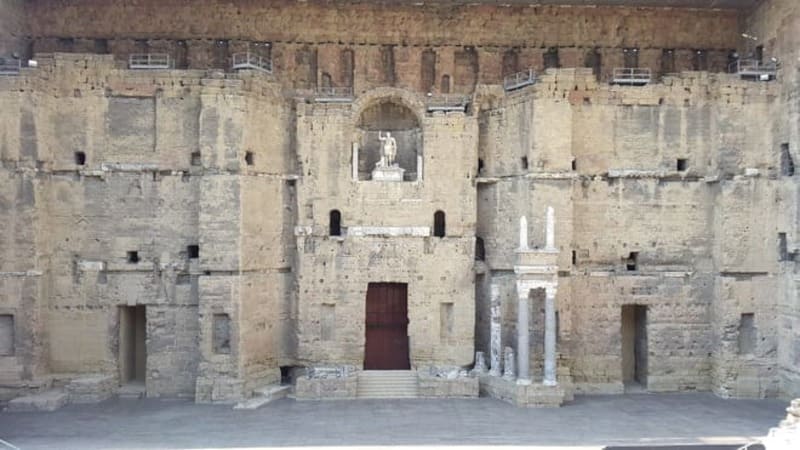
Returning to the main theme, tourism among the Romans included a displacement overnight at least one night and less than a year to a place of destination. All this done, of course, in free time. They had a lot of free time, getting to have 200 holidays a year (in 345 AD)

Religious Tourism and Roman Sex Festivities
One reason why the citizens of the Roman Empire mobilized were the religious festivals, to worship a certain god in particular. Some of these parties ended in sex parties, so it could be said that sex tourism already existed in the time of the Romans. The following were the best known Roman Sex Festivities The Lupercales Bacanales The Floralia
The Lupercales
It was one of the rituals of ancient Rome and with more sexual charge, whose purpose was the exaltation of fertility. It was celebrated every February 15 they were held around the Palatine Hill. Its name derives from lupus (wolf), in reference to Fauno Luperco, Romanization of the irrigation god Pan, god of forests, agriculture and grazing. Luperco was the god of fertility and unbridled male sexuality, endowed with great potency and sexual appetite. More information
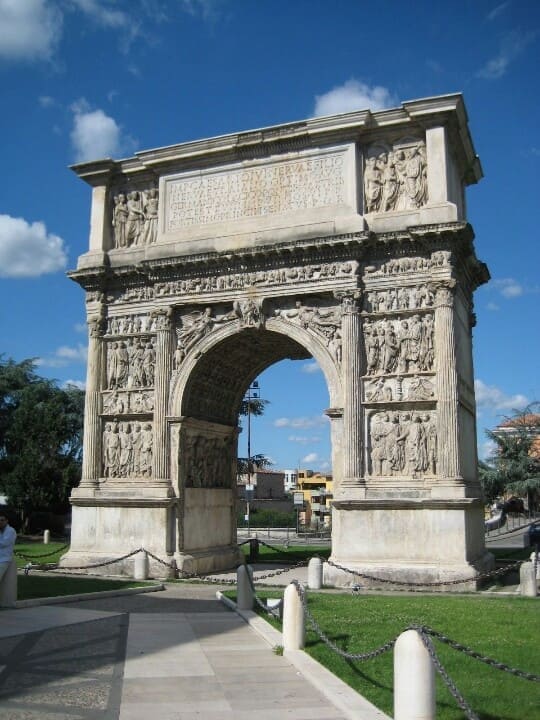
Roman Bacchanalia
Tito Livio assures that the cult of Dionysus originates from the regions of Etruria and Campania. In Etruria originally the cult was secret, diurnal, and celebrated only by women, on March 16 and 17 in the sacred forest of Semele, behind the docks, near the Aventine. Although this cult underwent important changes after the leadership of Paculla Annia, allowing the initiation into the cult of adolescent men under twenty years of age, although the prohibition to participate in the Bacchanalia was still in force for the rest of the men. In these rites an initiation oath was given to safeguard the secret and sacred unity of the group. According to the data provided, the initiates, after passing a stage of chastity and abstinence, could be integrated into the famous Bacchic rituals, where they drank and danced in a frenzied atmosphere, with shouts and ritual possessions. We are described how married women possessed by the god Bacchus ran frantically disguised as Maenads. It also seems that all kinds of lustful acts, both heterosexual and homosexual, took place at the bacchanalia at a time when homosexuality had not yet spread among sober Roman society. More information.
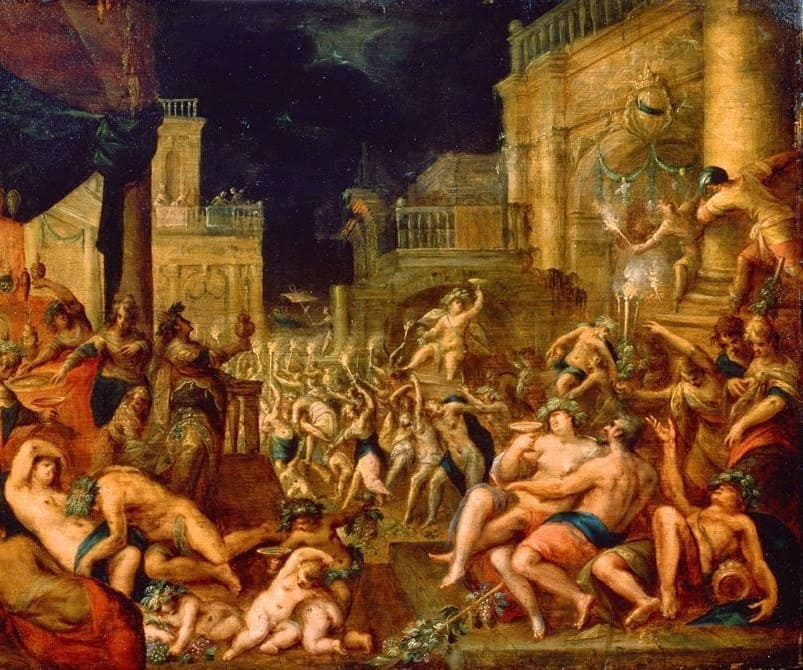
The Floralia
The Floraria was a Roman festival that was celebrated in honor of Flora, goddess of spring, vegetation and fertility in general. This festival was celebrated between April 28 and May 3, and symbolized the renewal of the cycle of life, which is why it became a party of a happy and relaxed nature, marked by dances, drinks and flowers. She is considered one of the protective divinities of prostitutes since her cult was very popular among Roman prostitutes and during their festivities, they took on great prominence. More information.
Travel in Ancient Rome: Non-Religious Tourism
The Romans traveled to see the temples of the Mediterranean, the pyramids and monuments of Egypt. Also to attend the Olympic Games in Greece and the prosperous markets of Asia Minor. In these markets there were many exotic items never seen in Rome, with which to decorate the villas of Campania. They also hired local guides and consulted papyri that explained a certain area and their entertainment possibilities. They were the tour guides of that time. Of course they bought something smaller as souvenirs and had a tendency to engrave the traveler’s name on the stones of the monuments they visited. This was at the request of the inhabitants, since the prestige of a noble visitor attracted more tourists.
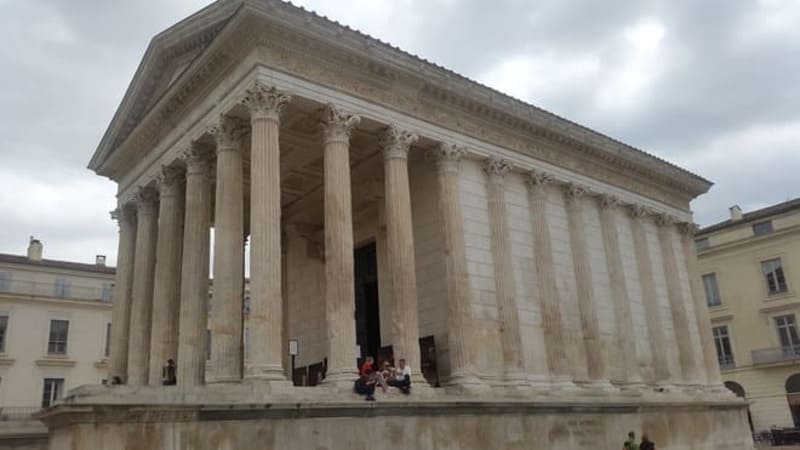
The trips were made for pleasure, business or health or religious issues. Religious tourism and pilgrimages to both Greek and Roman temples became part of almost every tourist itinerary. But it was not about devotion but about entertainment. These temples were visited by tourists who in some cases were no longer sacred places, but monuments to visit. (almost equal to what happens today in the Catholic churches of Europe)
Travel in Ancient Rome & Weekend Roman Villas: Capri & Pompeii
The Romans also liked to spend a leisure time away from the city and used to move to the Campania (Naples). From the time of the empire of Octavius Augustus, the Senate was no longer an institution of power. The emperor reigned and were not consulted. The senators retired to live in the countryside, near Rome but away from it. The area chosen was Campania, Cities such as Pompeii, Herculaneum, Tivoli, Beneventum and Islands such as Capri, where luxury villas were built. Infrastructure was also built as additional roads, ports, passenger ships, inns and markets.
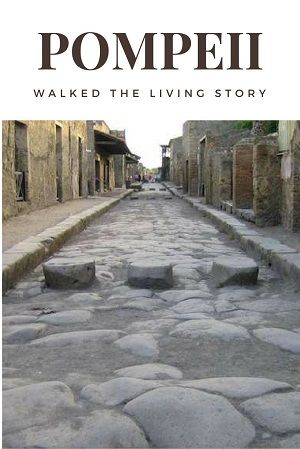
The houses in the city of Rome became the second residence and the country villa the habitual residence. You find the infrastructure was also built in those country places. Amphitheatres (Pompeii), circus maxima, thermal baths and medicinal baths. all this thanks to the pax romana that lasted approximately 250 years from the reign of Octavius Augustus. Emperor Caracalla built in Rome the baths that bear his name. They were public baths that had steam rooms, pools of hot water (caldarium) and cold (frigidarium), gymnastics, rest and massage rooms. There were also writing rooms, libraries and gardens. On the island of Capri, the Tiberian emperor built a luxurious villa with a swimming pool. You can still visit today’s day
Pompeii Brothels Sex Painting
Travel in Ancient Rome: Amphitheaters for all
The construction of the Maximum Circus and the Colosseum in Rome, led to tourism also going in the other direction. Inhabitants of the entire empire wished to know Rome. The network of roads, security and the pax romana contributed to a flow of tourists to the Rome. They also built amphitheatres like the Colosseum in Rome and theaters in other cities, which also enjoyed a fair share of tourists. We can name the theater of Orange (France) and the amphitheaters of Nimes and Arles (France). That amphitheaters can be visited nowadays and in a very good state of conservation.
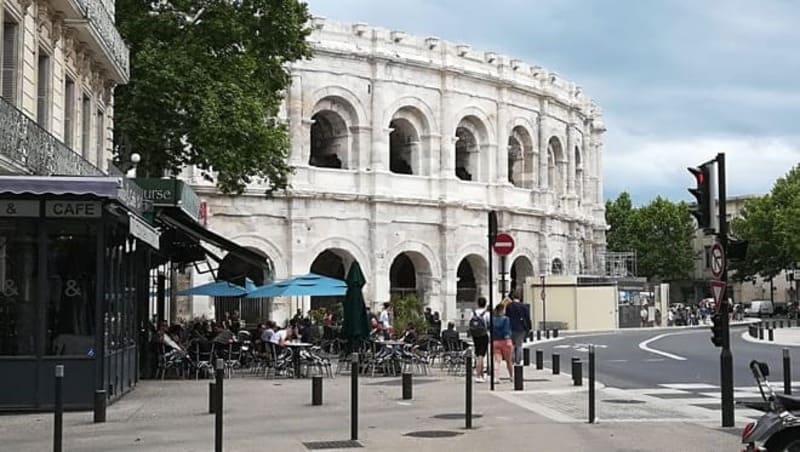
Colosseum, or Flavian Amphitheatre
The construction of the Colosseum, or Flavian Amphitheatre as it was originally called, began in 72 AD during the reign of Emperor Vespasian. The site chosen for its construction was an artificial lake that had been created by Emperor Nero as part of his Domus Aurea complex, a sprawling palace that covered much of Rome.
Vespasian ordered the lake drained and the ground leveled, and construction of the Colosseum began. The amphitheater was designed by the architects and engineers of the Roman Empire, and it took just eight years to complete.
The Colosseum was built using a combination of brick and stone, and it was designed to hold up to 80,000 spectators. The amphitheater was oval in shape, with a perimeter of 545 meters and a height of 50 meters. It had four levels of seating, with the lower levels reserved for the emperor, senators, and other high-ranking officials, while the upper levels were for the common people.
The construction of the Colosseum was a massive undertaking, requiring the labor of tens of thousands of workers, including skilled craftsmen and engineers. The amphitheater was built with such precision that it is said that a coin could be dropped from the top tier and land on the arena floor without touching any of the walls.
The Colosseum was inaugurated in 80 AD by Emperor Titus, Vespasian’s son, with a spectacular series of games that lasted 100 days. Over the centuries, the Colosseum became a symbol of the power and grandeur of the Roman Empire, and it remains one of the most iconic landmarks of Rome today.
My Darling, and if We Visit Sparta?
During the Roman domination in Greece, the city of Sparta, powerful and famous in other times became a focus of tourism on the part of the Roman upper class. Sparta no longer had possibilities of any kind, military or economic or political. But focused on their ancestral military education to young people. The education of the It was so hard that it became a tourist attraction in itself

The Ritual
The ritual combats that had traditionally been fought in the Sanctuary of Artemis Orthia, under Roman domination, became the dimastígosis (they existed for a long time) , where the children were scourged and sometimes even death. Also the Romans had a deep curiosity to discover how a city so feared in its time, I am reduced to a town of goat herders and a circus military education. Cicero tells in the Tusculanas (II 34) how Spartan education and its excesses had become a spectacle that attracted tourists. The crowd that comes to the show is so numerous that it was necessary to build an amphitheater in front of the temple to welcome it. This show attracted tourists until the fourth century of our era. Documented by Libanio in his Discourses, (I, 23).
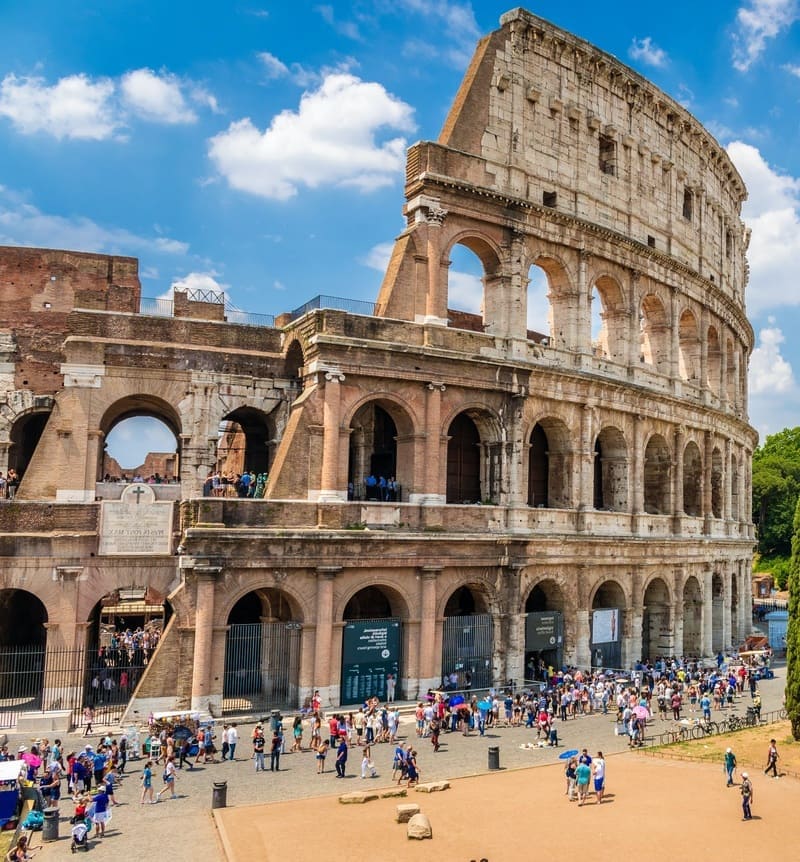
Is there a Roman Empire Roads Calculator?
Rome – Roman Roads – Pont du Gard – Roman Sex Festivities Yes. Stanford University has a calculator of sea and land routes, which existed in the Roman Empire. ( ORBIS) . The calculator has land routes, maritime coast and offshore, used during the Empire. You can calculate the distance and the estimated time according to the season of the year. Also the cost of the transfer in denarii. Below are the examples
Roman Empire: Roads Calculator
Start of the application. With the marine and terrestrial routes
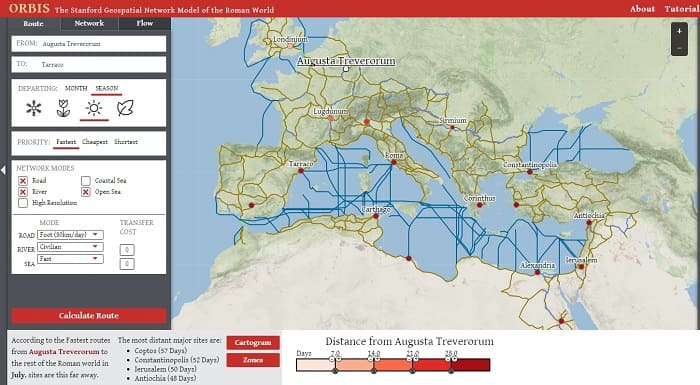
You may be interested: Religious Tourism in the Middle Ages
Choose the place of departure and destination And press calculate
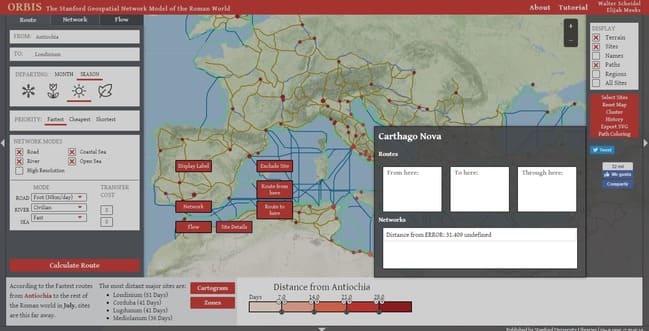
Londinium (London) to Coptos in Egypt
Long route ( Road & River) from Londinium (London) to Coptos in Egypt: The fastest trip from Londinium to Coptos in July takes 55.1 days, covering 6070 kilometers. Travel in Summer. 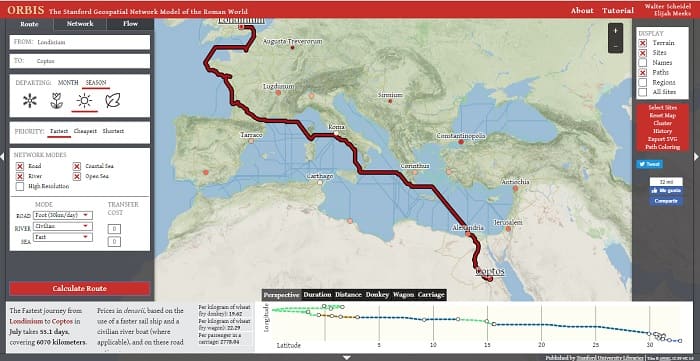
How much did it cost to travel in the Roman Empire?
Costs in denarii > In Donkey : Per kilogram of wheat : 19.62 , Per Wagon: Per kilogram of wheat : 22.29, Per passenger in a car: 2778.04 
How much did it cost to travel in the Roman Empire from Carthage Nova to Rome?
Cartago Nova ( Cartagena – Spain) to Rome in July takes 11.3 days, covering 1.577 kilometers. Travel in Summer.
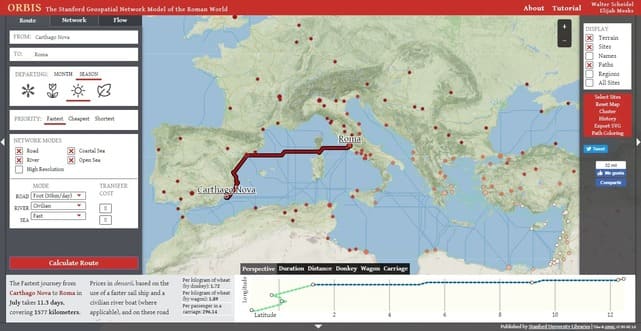 Same route as the previous one but in winter
Same route as the previous one but in winter
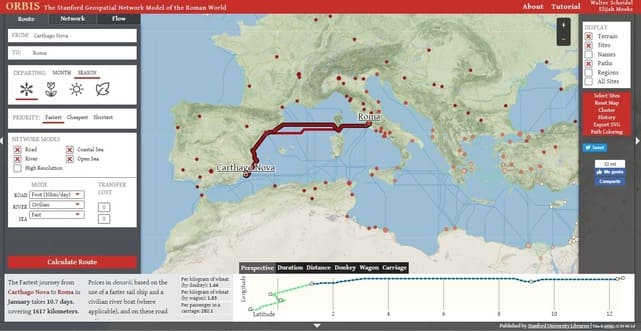
How much did it cost to travel in the Roman Empire from Londinium to Rome in Winter and Summer?
Roman Empire: Roads Calculator: from Londinium to Rome in winter and summer. According to the season of the year varies the marine and terrestrial route. 29 days, 2.897 km, in summer. 
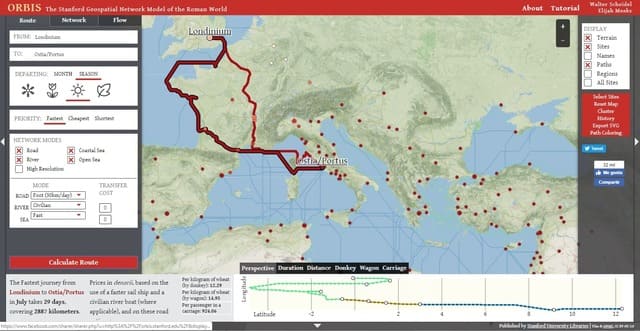

A Little History of Roman Roads
The Roman road was the road model used by Rome for the construction of its Empire. The road network was used by the army in the conquest of territories. Large forces could be mobilized with a speed never seen before. He played a fundamental role in the economy because the transport of goods was significantly improved. The roads also had great influence in the diffusion of the new culture and in spreading the Romanization throughout the Empire. The Itinerary of Antonino, of the 3rd century, is the written source that gives us more information about the Roman road network.
The roads united the cities of all points of the empire both military, turistic commercial or administrative. The trips were easy and fast for the time, with an organization that favored a comfort for its users. Thought, in principle for military use, will be the origin of the economic expansion of the Empire. They also facilitated their fall, since the invading barca towns used them for the conquest of the empire
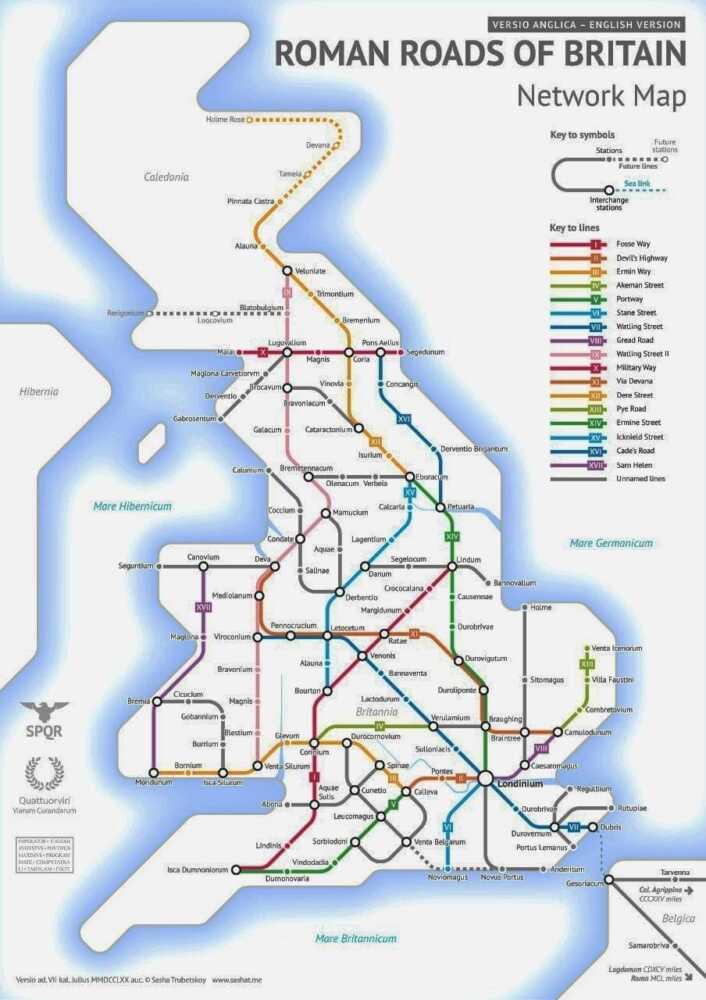
Why did pozzolana make Ancient Rome great?
What is clear is that their unstoppable growth and subsequent domination were the product of a host of factors that helped them build an empire like no other that had been seen. And it is precisely about construction, because in this article we are going to talk about pozzolana, a material used to make cement in ancient times that was key in Roman engineering.
The secret is in the dough
Pozzolans are siliceous or aluminum-siliceous materials used from very ancient times until the 19th century, when the so-called Portland cement was invented, and even later as a base ingredient for manufacturing cement. The main characteristics of pozzolana are a great hardening due to the chemical reaction that takes place when mixing calcium hydroxide and water and its impermeability derived from this same reaction. While it is true that the Greeks already used pozzolana as an ingredient to make concrete, it was the Romans who discovered all its advantages and applied them to their engineering works. Originally, the name comes from the town Pozzuoli (near the Vesuvius volcano, in Italy), where volcanic pozzolana was extracted.
Although there are many buildings from ancient Rome built with pozzolana that have survived to this day, the most relevant case is that of Agrippa’s Pantheon. This impressive construction, erected in the year 123 in the heart of the Eternal City, has the largest dome in ancient times (it was for 1,500 years) thanks to the use of pozzolana in the concrete mix. The Romans made it lighter by mixing pozzolana with pumice stone and broken bricks, thus creating a taller structure that still stands (and amaze everyone who sees it) so many centuries later.
Why was pozzolana so important?
Now, was it really so extremely important for the growth of Rome? As we have already said, the triumph of the Roman Empire when it came to expanding and imposing its world on other peoples was the culmination of numerous factors that should not be ordered according to importance since they all played their role and it was the sum of all that made it. possible. But we can say that pozzolana was the cement that held together each and every part responsible for Roman success.
After the legions subdued a new territory and the new authority linked to the Italian city was established, a process called Romanization began, through which the annexed towns were able to assimilate Roman culture and traditions through the common currency, language, education or the construction of civil works (remember that mythical scene from The Life of Brian where Monty Python questions the advantages of living under the yoke of Rome).
Influx of tourism in ancient Rome?
The great temples increased their presence and influence in the area, but it was the public baths, aqueducts or roads that really changed people’s lives and made the Roman Empire consolidate itself in lands that had previously been hostile to it. Pozzolana allowed the Romans to build strong, waterproof and long-lasting bridges and aqueducts, and little by little made the saying that “all (pozzolana) roads lead to Rome” a reality.
Related Post & References
- Stanford University Calculator RR
- History of Ancient Tourism : Roman Empire
- Roman Treadwheel Crane: Evolution of the Cranes
- Medieval Treadwheel Cranes
- Travel Gadgets: Power bank and more…
Roman, roman emperor, emperor of roman, romans empires, empires roman, empire of roman, of the roman empire. the romans empire, empire in rome, empire of rome, the roman empire, the empire rome, empires romans, empire roman, rome’s empire, romanian empire, the empire of rome, ancient rome’s, ancient roman, rome empire map, Religious Roman Sex Festivities Travel in Ancient Rome: Related Post End of the first part : Tourism in Ancient Rome
- History of Tourism: Grand Tour XVII & XVIII
- Travel accessories: Click here
- US History Tourism
- Roman Cranes
- Medieval Treadwheel Cranes
- Religious Tourism in Middle Ages
- Travel Check History – AMEX
- Amazon Posters & Paintings Decor Home
- Venus Callipyge







